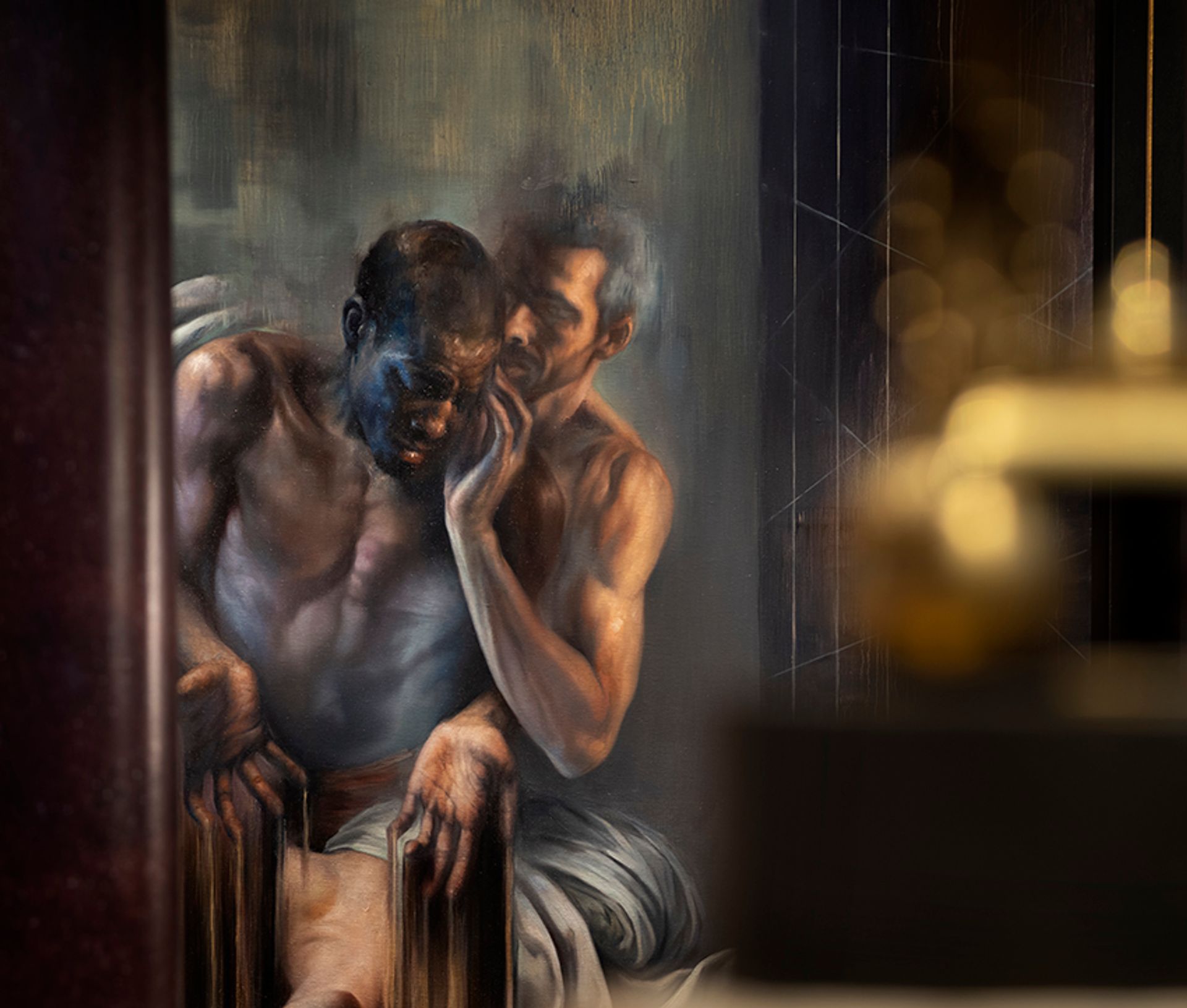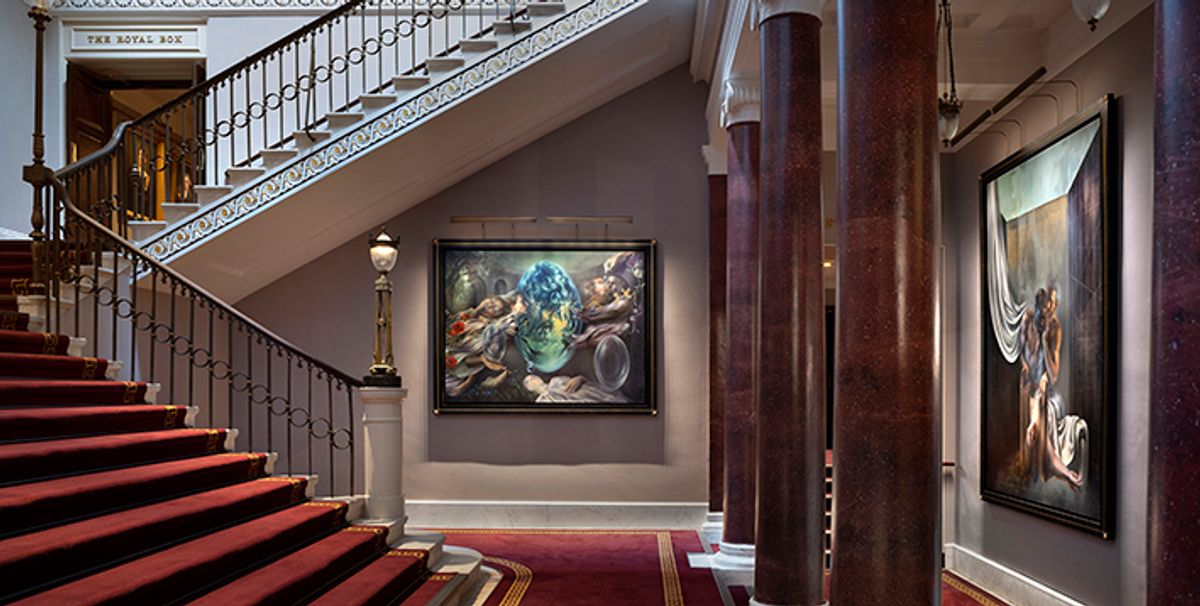“We are on a huge adventure here, because no theatre that I know of has ever commissioned Modern art on this scale,” says the composer and theatre impresario Andrew Lloyd Webber, referring to the dramatic Shakespearian works painted by the US artist Maria Kreyn on display at Theatre Royal Drury Lane. The eight paintings—darker contemporary takes on plays such as Macbeth, The Tempest, Othello and Hamlet—are dotted around the ground floor of the 358-year-old venue located in the heart of London’s West End.
Commissioning the vast works proved daunting, says Lloyd Webber, who is known for collecting Pre-Raphelite works. “I was beginning to wonder who on earth could actually achieve this particular commission because there had to be a unity of works in a theatre like the Lane.” He stresses that “it was really very reassuring to me to feel that I could have a dialogue with an artist who clearly not only could paint, but did understand that we weren't going to be trying to do something Pre-Raphaelite, or something in deference to me.”
He contacted Kreyn after seeing a feature on her works in Vanity Fair late 2018. “I thought the email was spam when he first reached out to me,” she says. Kreyn is Russian born, studied maths and philosophy at the University of Chicago, and is self-taught in painting. According to her website, she “reframes the techniques of the Old Masters and expands their pictorial vocabulary”.

A close-up of one of Maria Kreyn's works © photo by Philip Vile
Lloyd Webber first visited her studio in Brooklyn, New York, with the actor Glenn Close. “They looked at the King Lear composition for ages,” says Kreyn, who did a significant amount of preparatory work before putting brush to canvas. Many of these details changed as she started creating the paintings however. “I wanted there to be this bouncing back and forth between some of the compositional elements and colours, and I was thinking about how they would all cohere, because it is a two-part lobby [at the theatre],” she says.
A site visit ensued. “When I first saw the theatre it was a construction site. And I'm thinking, ‘What is this place going to look like?’ And it was actually really wonderful to see how much in dialogue they are with the space, but also contrast with it,” says Kreyn, who gives her own interpretation of the classic plays.
“I tried to use each play as the point of departure for an image that would reflect the emotional thrust of the play at large, rather than illustrating any [particular scene] from it. I think it was such a deep dive into a part of the human psyche, which is so exciting to share with a wide audience,” Kreyn adds. Her next works are inspired by The Tempest. “This body of work zooms out from the human form and still contemplates the human drama; they're actually more abstract.”
For Lloyd Webber, bringing the playwright back to the theatre was a priority after the actor John Gielgud broke his staff playing Prospero in The Tempest in 1957. “He said Shakespeare would never happen again in the Lane. I want to prove him wrong,” he says. “One of the most important things for me was that we had art that reflected our time, along with the history of the building.”
Crucially, parts of the theatre, acquired by Lloyd Webber in 2000 and refurbished over two years at a cost of £60m, will be publicly accessible during the day, turning the space into a public gallery. “This building in Covent Garden was closed up and not available to the public except when they're going to a show. That seemed to me completely wrong. So the whole ethos of everything at Drury Lane has got to be to make it accessible,” he says.
The South Coffee Room off of the Grand Saloon houses several major Pre-Raphaelite works owned by Lloyd Webber including Edward Burne-Jones (1833-98)’s The Adoration of the Kings & Shepherds triptych (1861) and The Depths of the Sea (1886); visitors to the theatre can book afternoon tea in these rooms. The Disney stage production of Frozen is currently playing at the theatre which recently re-opened in the wake of the Covid-19 pandemic.


